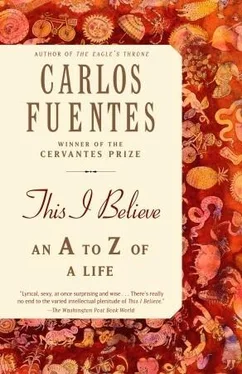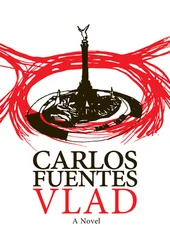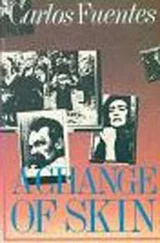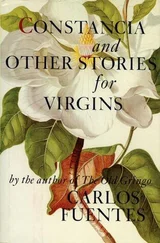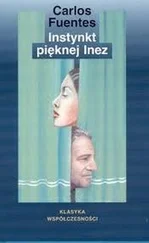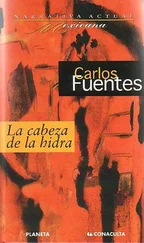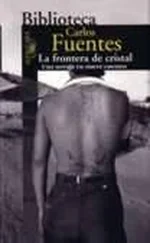I speak of the city I visited in the winter of 1968. I had traveled there with Julio Cortázar and Gabriel García Márquez to support our friend Milan Kundera and the impossible battle for the Prague Spring. I don’t know if there is any lovelier, sadder city in all of Europe. The most poignant spot is the Old Jewish Cemetery, a cramped, narrow plot of land encroached upon by old, soot-stained buildings. Instead of expanding horizontally, this cemetery rose upward: layer upon layer of tombs, earth upon earth. A geological ghost of the Jewish world of Bohemia. A tangle of dead leaves, black earth, and black tombs. The graves of Prague are like totems. One would have to burrow deep down, like a mole, to reach the very last man buried there. His name is Gregor Samsa. He doesn’t move. He is suspended above the void that is both his tomb and urban precipice; there he clings with hands and feet above the void of Prague, the “little mother with claws,” as Kafka called it.
Yet is there any other urban space that so majestically, with such admirable unity and purity of form, preserves its physiognomy, ever-changing and ever-singular, spanning the years from the High Middle Ages to the Baroque?
There is nothing more different from Prague than the beauty of Cambridge, whose “backs” are a necklace of precious stones, a successive parade of serene, immortal, architecture worthy of endless praise: from St. John’s to Trinity to King’s College to Queen’s and Peterhouse; I cannot think of another university complex that marries such beauty with such great service, such tradition with such creation. This is the university of Erasmus and Samuel Pepys, of Wordsworth and Byron. There is the tree from which, gravely, the apple fell down upon Isaac Newton. But if there is one artist who comprises all the secret symmetries of Cambridge, it is Christopher Wren. I spent the most perfect year of my life reading and writing and gazing out, from my room at Trinity College, at the asymmetric quadrilateral of Wren’s Neville’s Court. This is an asymmetry that, breaking the apparent symmetry of Cambridge, opens the door to a mystery that can be called architecture as a prophecy of the past. . Cambridge assimilates the inhabitant, more than the visitor, to a life of work, discipline, and the pleasures shared by both solitude and companionship. I have never encountered a student body as informed or sharp-witted as that of Cambridge. And there is no uninterrupted succession of architecture more beautiful than those Cambridge backs. And accompanying the absolute serenity of immutable architecture is the fastest sky my eyes have ever seen. What pure delight it is to lie down on some green space in Cambridge, hands clasped behind the neck, to contemplate the passage of those “clouds of glory,” as Wordsworth called them in the great poem of English Romanticism, The Prelude, comparing them with “God, who is our home,” before the “shades of the prison-house begin to close” upon us. .
Granada, Ronda, Córdoba, Salamanca, Santiago de Compostela, Oviedo, Ávila, Cáceres. My rosary of Spanish cities goes beyond architectural beauty to embrace a human conviction. I imagine the ideal European city. Italian architecture. French cuisine. English theater. German music. And filled with Spaniards. One way to classify cities is by the number of friends we have in them. And outside of Latin America, I can’t think of a single place where I have more friends than the cities of Spain. I am at home in Madrid, Barcelona, Mallorca, Sevilla. .
I always return to Paris — another city of friends — because it is where beauty and life coalesce so perfectly. There is no other European city where I have lived quite so intensely — politically, intellectually, romantically. My son was born there. I learned to love my wife there. There are cities I only visit — those in the north of Europe, the cities of the United States — and there are others in which I live. Mexico, as an act of amorous masochism, is my most well-lived city. It is my people, my history, my cross, my suffocation, my test, my challenge: remember me as beautiful, little mistress of New Spain, don’t gaze down upon me as I fall to my knees, most accessible Virgin of Guadalupe, don’t gaze up at me as I lie down, inaccessible whore of Orozco. .
I hear the echoes of kettledrums above the noise of engines and jukeboxes, amid the sediment of bejeweled reptiles. The serpents, animals with history, sleep heavy in your urns. Your eyes gleam with the voracious suns of the high tropics. In your body, a barbed-wire fence. Don’t give up, brother! Summon all that you have in you, sharpen your knives, and refuse. Do not speak, do not pity, do not love. Let all your nostalgia and all your loose ends emigrate. Every day, start at birth. And recover the flame at the moment of that contained, imperceptible strumming, at the moment of the streetside barrel organ, when it seems as though all your memories have suddenly become clear, tight. Recover them on your own. Your heroes will not return to help you. You have come here, without knowing it, to find me at this plateau of funereal jewels. This is where we live, where our aromas blend together on the city streets, the smells of sweat and patchouli, new brick and subterranean gas, our idle and tense flesh, though never our gazes. We have never knelt together, you and I, to receive the same host; torn apart together, created together, only to die for ourselves, isolated. Here we fall. But what is to be done about it? Endure it, brother. And wait to see if one day my fingers touch yours. Come, let yourself fall into the lunar scar of our city, that city that is a panoply of sewers, glass of vapor, and mineral frost, the city that is the presence of all our forgotten memories, city of carnivorous precipices, of immobile pain, immense brevity, stagnant sun, long scorches, city of low flames, city up to its neck in water, city of picaresque lethargy, of black nerves, of three navels, of the contagious laugh, of warped stenches, rigid city between air and worms, old city in lights, old city in its cradle of birds of ill omen, new city living alongside sculpted dust, city living alongside the immense sky, city of dark varnish and stones, city beneath the resplendent mud, city of viscera and ropes, city of violated defeat (city that we could not suckle in the light of day, the secret defeat), city of humble outdoor markets, meat from clay pots, city that is the reflection of fury, city of desired failure, city in a tempest of domes, city that is the trough of the rigid jaws of the brother drenched in thirst and scabs, city woven in amnesia, resurrection of childhoods, incarnation of feather, city of bitches, city of starvelings, sumptuous villa, city of lepers and sunken pestilence, city. Incandescent prickly pear. Eagle without wings. Serpent of stars. This was what we were given. What can we do about it, in the most transparent region of the air. 6
London is good to me, for it is where I write in peace because nobody calls me, nobody knows me. I look out the window. I don’t go out into the relentless rain. My voyage is my desk. My tropics are made of paper. I hear the incongruous telephone. The answering machine serves as testimony of my absence. I am here. I am not here. I write and I write. All I need to hear and understand, I hear from the mouths of my six or so English friends.
Nevertheless, I cannot abandon the cities that witnessed my growth, shaped me, and educated me. Panama, the city that calls itself the corazón del mundo y puente del universo (the heart of the world and the bridge of the universe), even though it is only a scar of the sea in the middle of the jungle. Montevideo, which I knew with no skyscrapers but full of old-world grace, the perfect capital city dreamed up for its writers, if not by its writers: Felisberto Hernández, Juan Carlos Onetti, and the ghost of Lautréamont. . And Quito, golden equatorial doubloon whose inhabitants only request, “En la tierra, Quito, y en el cielo, un hoyito para ver a Quito” (On earth, Quito, and in heaven, a crevice through which to gaze upon Quito). And then Rio de Janeiro, the cidade maravilhosa where, as I mention elsewhere in this volume, I learned about literature perched atop Alfonso Reyes’s knees. Isn’t literature, then, the lie that reveals the truth in a Janic city, that “río de enero, río de enero, fuiste río y eres mar” (river of January, river of January, once river, now sea) that Reyes himself sang? Santiago de Chile, where liberty and poetry were forever fused, Santiago of the Frente Popular, the beautiful women with eyes like grapes and schools of British discipline where the desire to write constituted a lack of discipline that was transformed into order and lessons in constancy in the face of the overwhelming obligation to prove, day in and day out, that the Battle of Waterloo had been won on the playing fields of Eton. . Buenos Aires, where I became a man and loved and walked about freely, and read Borges and refused to repeat the fascist mottoes of the regime, and understood why tango is a sad thought that one dances, and how a man could fall in love to the point of dishonor because of a woman like Mecha Ortiz or Tita Merello. Next to the lion-colored river, said Lugones, Buenos Aires is a city that was founded twice, the city where the Atlantic and the Pampa came together, equally vast and equally featureless, and gave Buenos Aires, a city privileged by distance and absence, the melancholy of being unique, of not being quite like anything else and bearing the cross of wanting to be like another city, Paris or Babel. There may be no other city as solid, as constructed, as “built” in Latin America, but there is also no other city quite so lost in the mist of its language, literature, music in motion, so wounded by its broken promises, inconceivable cruelties, its “disappeared,” its tortured, its atrocities that cannot begin to equal the carnivalesque shock left behind by its dictators, its embalmed saints, its presidential ballerinas, its palace sorcerers. Buenos Aires endured all this and continues on, perhaps because the city exists thanks to a miracle, because the cannibals didn’t eat it, and perhaps then that is why Buenos Aires eats meat. Founded twice, it could be refounded a hundred times over.
Читать дальше
